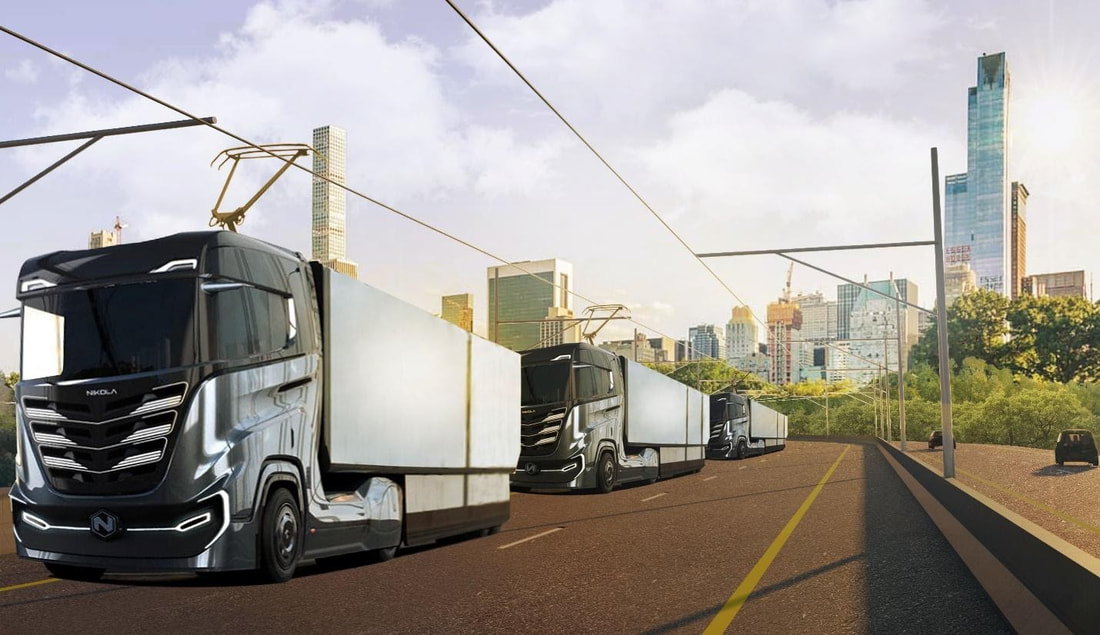|
Overview of the ATC If you’ve heard me talk recently, you have probably heard me mention the ATC, or the Autonomous Truck Corridor. This is an idea that I came up with by working with an awesome team at Oklahoma State, Penn State, and University North Carolina Charlotte. This is an idea that has infected my brain. I can’t get it out, and so I thought I would write a blog post about it. I also have some videos I have made about the concept at the end of the post. The US National Highway System (NHS) is critical for the efficient transport of goods and the safety and freedom of the traveling public. A special vehicle on the NHS is heavy freight trucks. Here are a few of the issues related to heavy freight trucks on the NHS:
Vehicle manufacturers are developing autonomous and electric trucks to address these needs but their limited haul distances and challenges interfacing with passenger vehicles have not allowed them to enter the market yet. If these needs are addressed it would create a monumental improvement in the US economy while improving the lives of the traveling public, and reducing the impact on the environment. I am part of a team of engineers who have a vision for a heavy freight truck corridor with a long life that uses autonomous, continuously powered, and electric heavy freight trucks. This corridor will be separated from passenger cars, specially designed for autonomous heavy freight trucks, and have an overhead electric power line to provide constant power. We call it the Autonomous Truck Corridor or ATC for short. Pretty cool name right? The ATC is a game-changer because the freight trucks can travel continuously without stopping, the vehicles can travel at higher speeds and at closer spacing, and the vehicles will be separated from passenger vehicles and so they can be autonomous. Batteries on the trucks will be charged so that they can remain powered once they leave the ATC to make local deliveries. This corridor will be largely built using existing right of way or it can be added as major highways are expanded. This will reduce land acquisition cost, allow freight to follow existing delivery lines, and leverage existing infrastructure. This will create unbelievable economic opportunities for the US. The ATC will reduce delivery times up to 50% while reducing traffic on existing highways. This reduction in traffic will improve diver safety and extend the life of existing roadways. The proposed electric motors are more energy-efficient and will reduce costs and emissions by > 25% per mile. A portion of these savings could be used to pay for the cost and maintenance of the ATC. Watch these videos if you would like to learn more about the ATC. References:
0 Comments
Your comment will be posted after it is approved.
Leave a Reply. |
Join the Concrete Freaks email list and receive exclusive tools, tips, and resources directly from Tyler.
Click Subscribe. AuthorDr. Tyler Ley, Ph.D, P.E., is a professor of structural engineering at Oklahoma State University. He was named a Most Influential People in the Concrete Industry by Concrete Construction Magazine in 2019, and was named the outstanding professor at a research university by the Oklahoma Foundation of Excellence in 2018. He has a passion for researching and educating people about what he considers to be the greatest material in the world. CategoriesArchives |
- Tyler Ley
- Research
- Publications
- Labs & Facilities
- YouTube
- Giving
-
Additional Sites
- Group Members
- Fly Ash Calculator
- Shirts
- Super Air Meter
- Engineering is Everywhere
- Hydration Theater!
- PLC
- Precast Overhang
- Tarantula Curve
- TarantulaVideos
- Troubleshooting videos
- E2 videos
- Blog
- Reinforcing Secrets
- Myers Briggs
- mix design YouTube
- Curing Videos
- Specifications
- ATC
- fly ash video
- ACI member
- Job
- sustainability
- Minnesota
- Rapid Repair
- Dreamcrete
- teams
- SAM
- Phoenix
- Tools
- Air loss during pumping
- WOCwater
- Tyler Ley
- Research
- Publications
- Labs & Facilities
- YouTube
- Giving
-
Additional Sites
- Group Members
- Fly Ash Calculator
- Shirts
- Super Air Meter
- Engineering is Everywhere
- Hydration Theater!
- PLC
- Precast Overhang
- Tarantula Curve
- TarantulaVideos
- Troubleshooting videos
- E2 videos
- Blog
- Reinforcing Secrets
- Myers Briggs
- mix design YouTube
- Curing Videos
- Specifications
- ATC
- fly ash video
- ACI member
- Job
- sustainability
- Minnesota
- Rapid Repair
- Dreamcrete
- teams
- SAM
- Phoenix
- Tools
- Air loss during pumping
- WOCwater



 RSS Feed
RSS Feed
